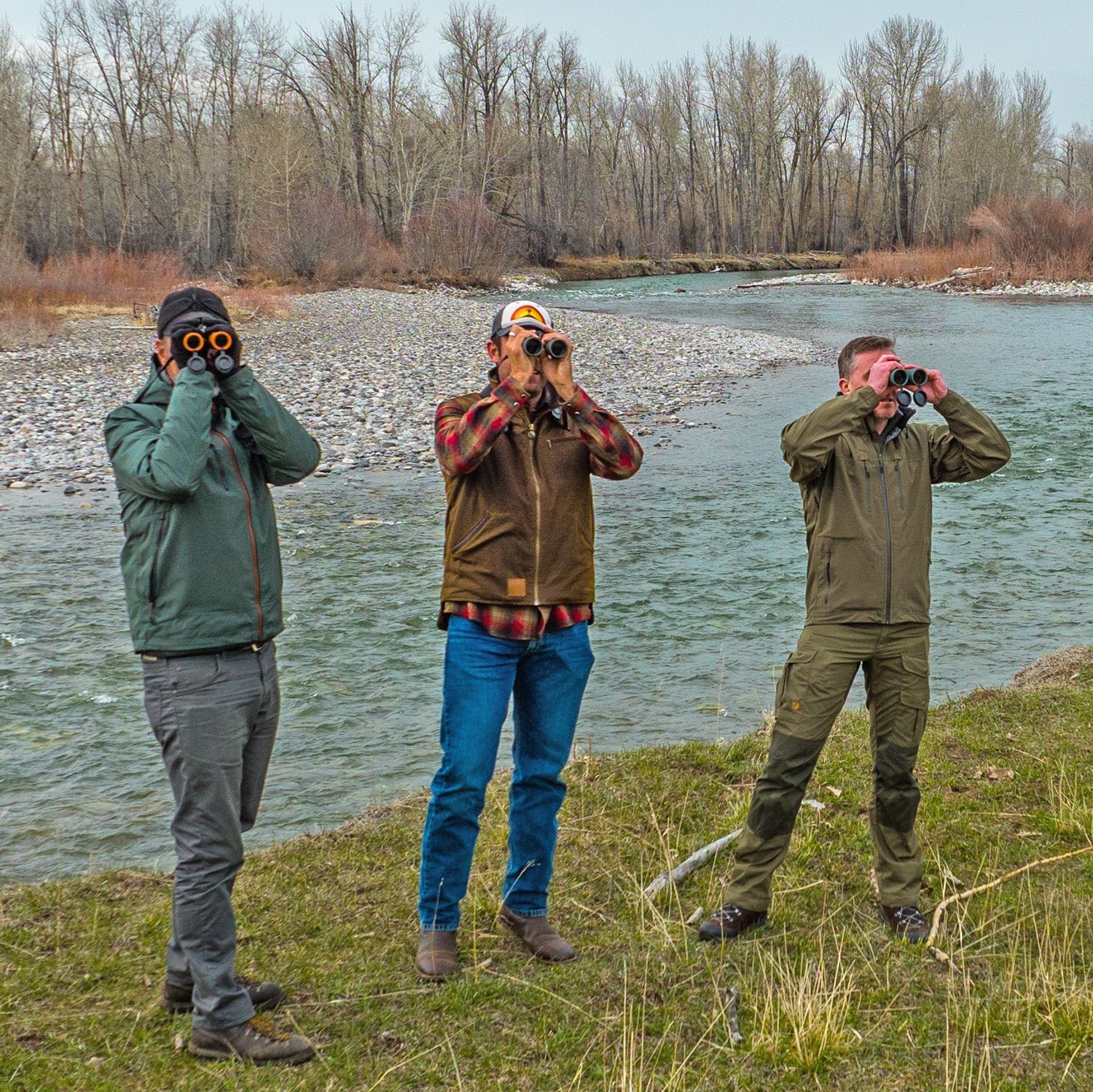“Dammit Wes,” a friend of mine shouted after I handed him my Swarovski binoculars for the first time. On my recommendation, he’d just splashed out $1,200 on some from another brand, and was so happy with them that he couldn’t believe mine would be noticeably better. But they were.
The phrase “the best” gets overused in gear reviews, but that’s exactly what these are: the best binoculars ever made. They’d better be, since they cost $2,999.
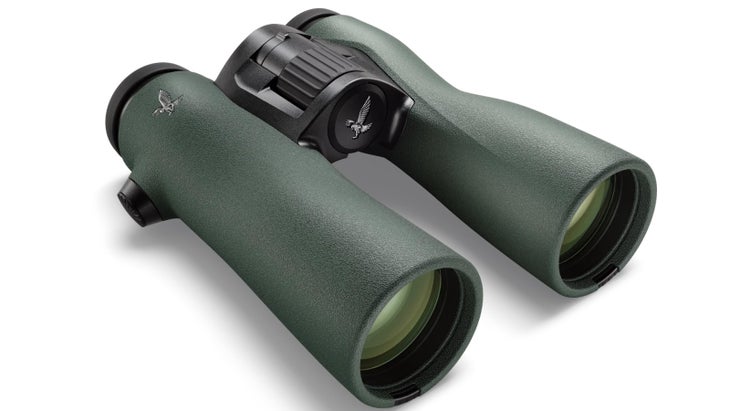
The Best Binoculars Ever Made Have a Price Tag to Match
NL Pure 10×42
How can Swarovski possibly justify that price for a piece of equipment that can cost as little as $70? There are a bunch of jargony technical reasons, but let’s start with the emotional one that’s most important to me: I love animals. The time, travel, and equipment it takes to spot, hunt, and admire wildlife accounts for a huge amount of my spending each year. I dedicate large parts of my time to slogging up and down mountains, paddling rivers, waking up before dawn, and going to bed wet, sore, and exhausted just for the opportunity of a fleeting glimpse of fauna in the wild. These Swarovski binoculars help me make the most of each sighting.
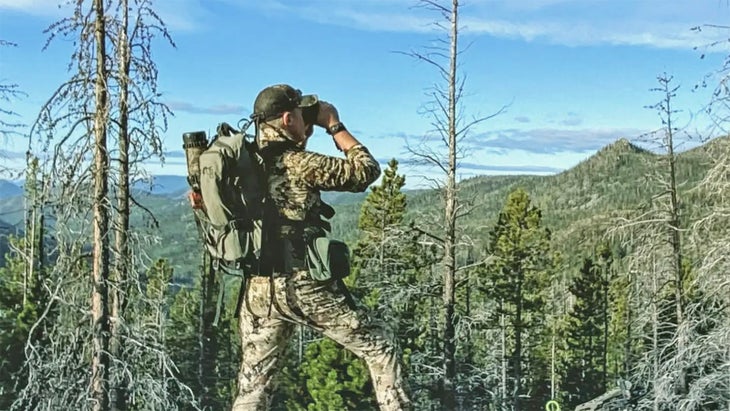
The optical quality of the lenses—glass that is free of distortion and transmits light equally across its entire surface. The Swarovski family, which also owns both a luxury crystal company and one that specializes in precision machine tools, has all the infrastructure in place to make high-quality glass. Swarovski treats the glass with coatings that protect it and amplify its performance in low light. Swarovski’s coatings eliminate reflection, directing as much light through the glass as possible. The protective layer prevents scratches and repels water and dirt, keeping the lenses clean. Then, on the prism (which corrects the image orientation from upside down to right side up), there’s a phase coating which ensures light passing through the Swarovski binoculars is directed perfectly toward your eye.
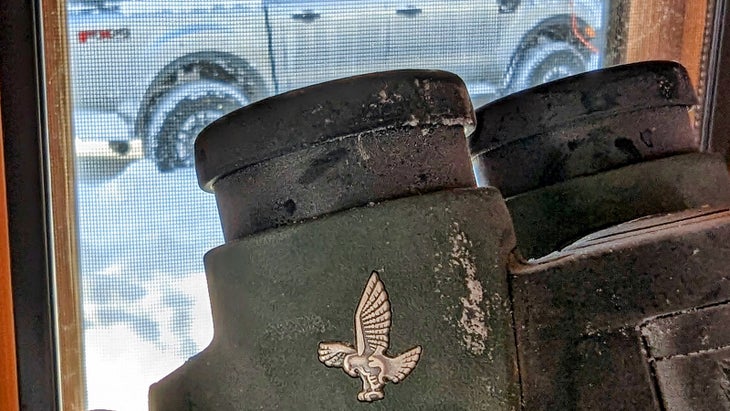
I’m particularly impressed by the NL Pure 10×42’s eyepiece lenses, which are designed to flatten the image reaching your eyes. Many lenses create a rolling ball effect, where objects appear larger in the center of the lens than they do near the edges. Not only does that effect distort the image, but it can create sort of a fun-house mirror sensation, causing dizziness and nausea over long periods of viewing. But the NL Pures display a perfectly flat field of view.
Then there’s the matter of what you can see through the lenses. As magnification increases, your field of view typically decreases. The purpose of binoculars is often simplified into image magnification. The “10” in the name NL Pure 10×42 represents how much magnification they provide. But even at ten-times magnification, these NL Pures display as broad a swath of the landscape as older eight-times Swarovski designs. Flying birds stay in the frame longer than on conventional ten-times magnified binoculars, making them easier to track. That field of view is so broad that you can often lose sight of it beyond your peripheral vision, so looking through the Swarovski binoculars doesn’t feel like looking through a toilet-paper tube.
The “42” in the name refers to the size of the objective lenses—the ones farthest away from your eyes. The more magnification an optic has, the less light reaches your eyes through it. However, the larger an objective lens is the more light reaches your eye. More light allowance into the binoculars improves the details you can see and the enhances the color resolution.
Every set of binoculars is a compromise between magnification, objective size, and overall size and weight. 10x42s are the ideal compromise for travel-size binoculars. You get plenty of magnification and light gathering, in a package that’s reasonably compact and lightweight.
Plus, these binoculars are incredibly svelte. Not only do the Swarovski NL Pures weigh less than 30 ounces, but the typical double bridge design of roof-prism binoculars has been replaced by a unified bridge. Their ergonomic shape—the tubes flatten into ovals halfway along, right where your hands want to grip the body—positions the focus wheel directly under your index finger. Typical of Swarovskis, a thick rubber armor adorns the entire body, offering a sure grip even in wet conditions or while wearing gloves.
That shape, the iconic Swarovski green, and the Northern Goshawk logo sets the NL Pures apart, visually, from lesser binoculars. And, I won’t lie, that’s also part of the appeal. Soon after I brought this pair home, my wife asked me why I wouldn’t put them down. “This is my Rolex,” I explained. Carrying these, in my mind, signals that I’m someone who takes wildlife seriously and is dedicated to enjoying time with the creatures of the forest. But unlike a fancy watch, these binoculars actually do something my phone can’t.
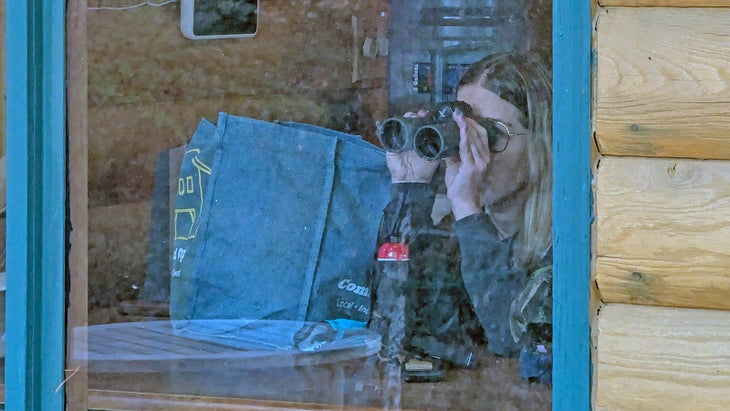
Unlike the larger, heavier, $5,330, animal-identifying, artificial intelligence-equipped Swarovski AX Visios, or other models equipped with laser rangefinders, these NL Pures are a simple, robust, purely mechanical device. There’s really nothing that can go wrong with them. In the two years I’ve had them, I’ve dropped them in the mud, banged them on trees and rocks, and dragged them everywhere from coastal Alaska to rural France to beaches in Baja, Mexico. In that time the only maintenance I’ve had to do was occasionally wipe the lenses with a cloth.
What’s it like to look through them? The crazy thing here is I can’t show you. No monitor, television, or printer in the world is capable of producing as crystal clear an image as is achieved by looking through this pair of Swarovski NL Pure binoculars. And no words describing how it feels like you’re standing ten times closer to whatever you’re looking at will ever do the experience justice. You just need to try a pair for yourself. But be warned: like my buddy found out, picking up a pair of Swarovskis will forever ruin your perception of all other binoculars.


